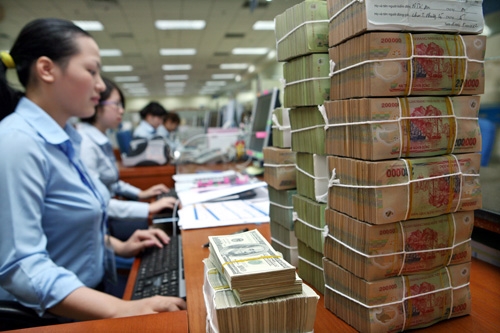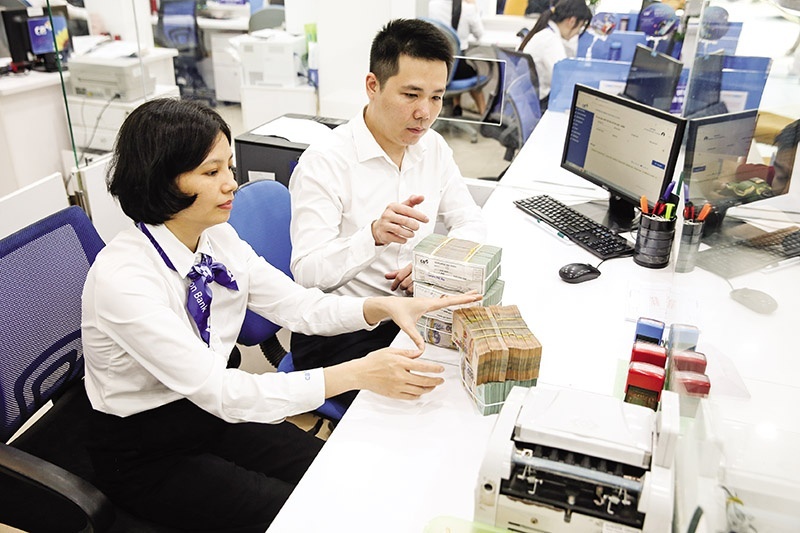Banks recommit to credit risk management

illustration photo
A KPMG Banking Survey released on August 21 supported this assertion with nearly all the banks surveyed reporting plans to increase investment into credit risk management.
The survey posed questions to the 20 largest banks in Vietnam, of which 13 responded. 67 per cent of those said they would at least minimally increase investment into this area over the next 12 months, and 27 per cent said they would make a significant increase.
40 per cent responded that they were not satisfied with the current internal credit ranking system.
“This statistic is very worrying,” said KPMG partner Tran Dinh Vinh, “Vietnamese banks need to seriously consider their credit rating systems to maintain credit quality.”
The root of credit risk is poorly designed credit models, and Vietnamese banks are using internal rating models that were developed four or five years ago. These models fail to keep up with the present situation and banks have lost confidence in their models because they approved many borrowers that have, in fact, defaulted on their loans and left the country’s financial sector with a very high rate of non-performing loans (NPL).
NPLs have significantly increased since 2009 and officially stood at 4.67 per cent as of April 2013. However, independent rating agencies and economists believe the unreported real number to be much higher.
Vinh added that NPLs are primarily sourced to banks’ subsidiary securities companies, other lending institutions which extended credit to those who could not borrow from banks, and state-owned enterprises whose defaulted loans the government won’t allow to be classified as NPLs.
“The official NPL rate does not include debts which were sold and not included in banks’ balance sheets, over-due corporate bonds, and bad debts restructured by the State Bank’s Decision 780. As such, the current NPL rate is a poor reflection of the true state of the Vietnamese economy and of banks’ credit quality,” said Vinh.
The KPMG survey also showed that most banks replied “no” to the question “Do you think it is possible to have 15-17 domestic banks by 2015?” as per the government’s banking system restructuring plan.
The survey reflected that the restructuring plan had been slow and that there were still more than 40 Vietnamese banks at current.
“It is not easy to merge financial institutions. You have to combine people, processes, technology, branches, and brands. Moreover, the number of banks has risen so rapidly since 1992 that there is little to no local experience in terms of M&A between banks,” reported the survey.
Vinh speculated that banks would have more confidence in the government’s consolidation plan if the deadline was moved back to 2017 or 2020.
What the stars mean:
★ Poor ★ ★ Promising ★★★ Good ★★★★ Very good ★★★★★ Exceptional
Latest News
More News
- The promotion of ESG via banking (November 21, 2024 | 09:32)
- Standard Chartered committed to Vietnam’s financial success (November 21, 2024 | 09:24)
- Full ESG adoption the priority for Agribank (November 21, 2024 | 09:07)
- Banks entice youth with tech advances (November 21, 2024 | 08:00)
- Banks shaping the future as business advisors (November 20, 2024 | 21:00)
- ESG represents a shift towards sustainability for banks (November 20, 2024 | 13:00)
- GGGI supports Vietcombank’s debut of $80 million green bonds (November 20, 2024 | 11:20)
- SHB and the ESG journey: creating social value in every step (November 19, 2024 | 15:00)
- Banking sector contributes to ESG, green growth, and sustainable development (November 19, 2024 | 14:42)
- ESG implementation in banking: from awareness to action (November 19, 2024 | 12:08)




















 Mobile Version
Mobile Version